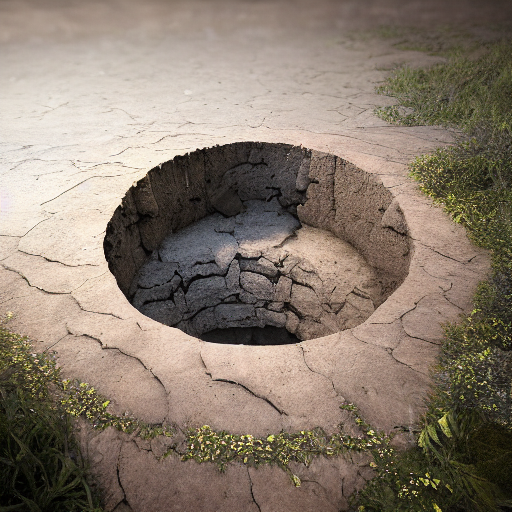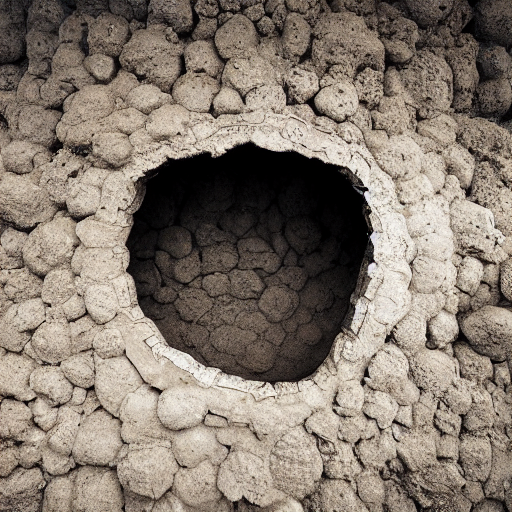There are several reasons why many Indians use holes in the ground for toilets:
- Cultural and traditional practices: In some parts of India, the use of holes in the ground for toilets is a long-standing cultural and traditional practice. These toilet facilities are known as “pit latrines” or “deep borehole toilets,” and they have been in use for centuries in rural areas of the country.
- Lack of infrastructure: In many parts of India, there is a lack of infrastructure, including sewage systems and pipelines, which makes it difficult to construct and maintain modern toilet facilities. Pit latrines are a simple and low-cost solution to this problem, as they do not require a connection to a sewage system.
- Water scarcity: In some areas of India, there is a shortage of water, making it difficult to maintain modern toilet facilities that require a constant supply of water for flushing. Pit latrines, on the other hand, do not require water for flushing, making them a more practical and sustainable option.
- Cost-effectiveness: Pit latrines are generally less expensive to construct and maintain compared to modern toilet facilities. This makes them a more affordable option for many people, particularly in rural areas where incomes are often low.
- Health concerns: Pit latrines can pose health risks if not properly constructed and maintained. If the pit is not deep enough or if it is not properly sealed, it can lead to the contamination of groundwater and the spread of diseases. In addition, pit latrines can attract flies and other pests, which can further contribute to the spread of disease.
Despite these challenges, the use of pit latrines is still prevalent in many parts of India, particularly in rural areas. In recent years, there have been efforts to promote the use of modern toilet facilities and improve sanitation infrastructure in the country. The government of India launched the Swachh Bharat Abhiyan (Clean India Campaign) in 2014, which aims to improve sanitation coverage and eliminate the practice of open defecation in the country. As a result of this initiative, there has been an increase in the construction of modern toilet facilities, particularly in schools and public places.

However, the transition to modern toilet facilities has been slow, and there is still a significant gap between the availability of modern toilet facilities and the demand for them. To address this gap, the government of India has implemented various programs and initiatives to promote the construction of modern toilet facilities and improve sanitation infrastructure. These efforts include providing subsidies and loans to individuals and communities to construct toilets, implementing awareness campaigns to promote the use of modern toilet facilities, and collaborating with NGOs and other organizations to improve access to sanitation in rural areas.

In conclusion, the use of pit latrines for toilets is prevalent in many parts of India due to cultural and traditional practices, lack of infrastructure, water scarcity, cost-effectiveness, and health concerns. While there have been efforts to promote the use of modern toilet facilities and improve sanitation infrastructure in the country, the transition to modern toilet facilities has been slow, and there is still a significant gap between the availability of these facilities and the demand for them.
But besides those reasons, what is the weirdest reason people may use a hole in the ground for toilet?
It is difficult to say what the “weirdest” reason might be for someone to use a hole in the ground for a toilet, as different people and cultures may have different beliefs and practices. However, here are a few potential reasons that could be considered “weird” by some people:
- Spiritual or religious beliefs: Some people may believe that using a hole in the ground for a toilet has spiritual or religious significance. For example, some Hindu ascetics in India follow the practice of “sanctified defecation,” in which they use a pit latrine as a means of purification and spiritual discipline.
- Environmental concerns: Some people may choose to use a pit latrine as a way to reduce their environmental impact. Pit latrines do not require water for flushing, which can save a significant amount of water and reduce the demand on water resources.
- Personal preference: Some people may simply prefer the use of a pit latrine to a modern toilet due to personal preference or habit. For example, someone who has grown up using a pit latrine may feel more comfortable and familiar with this type of toilet facility.
Again, these are just a few potential reasons that some people might use a hole in the ground for a toilet. It is important to respect the beliefs and practices of others, even if they differ from our own.
Tags: culture, hole, india, restrooms, toilets
Tweet
As a person who is interested in cultural differences, I found this article informative and eye-opening. It is fascinating to learn about the reasons why many Indians still use holes in the ground for toilets. It is clear that this practice has deep cultural roots and is tied to beliefs about cleanliness and hygiene. While it may seem odd to outsiders, it is important to understand and respect the cultural practices of other countries. I appreciate the author’s approach of explaining the practice without judgment or criticism. This article serves as a reminder that we should always strive to learn about and appreciate different cultures, rather than dismissing them as strange or inferior.